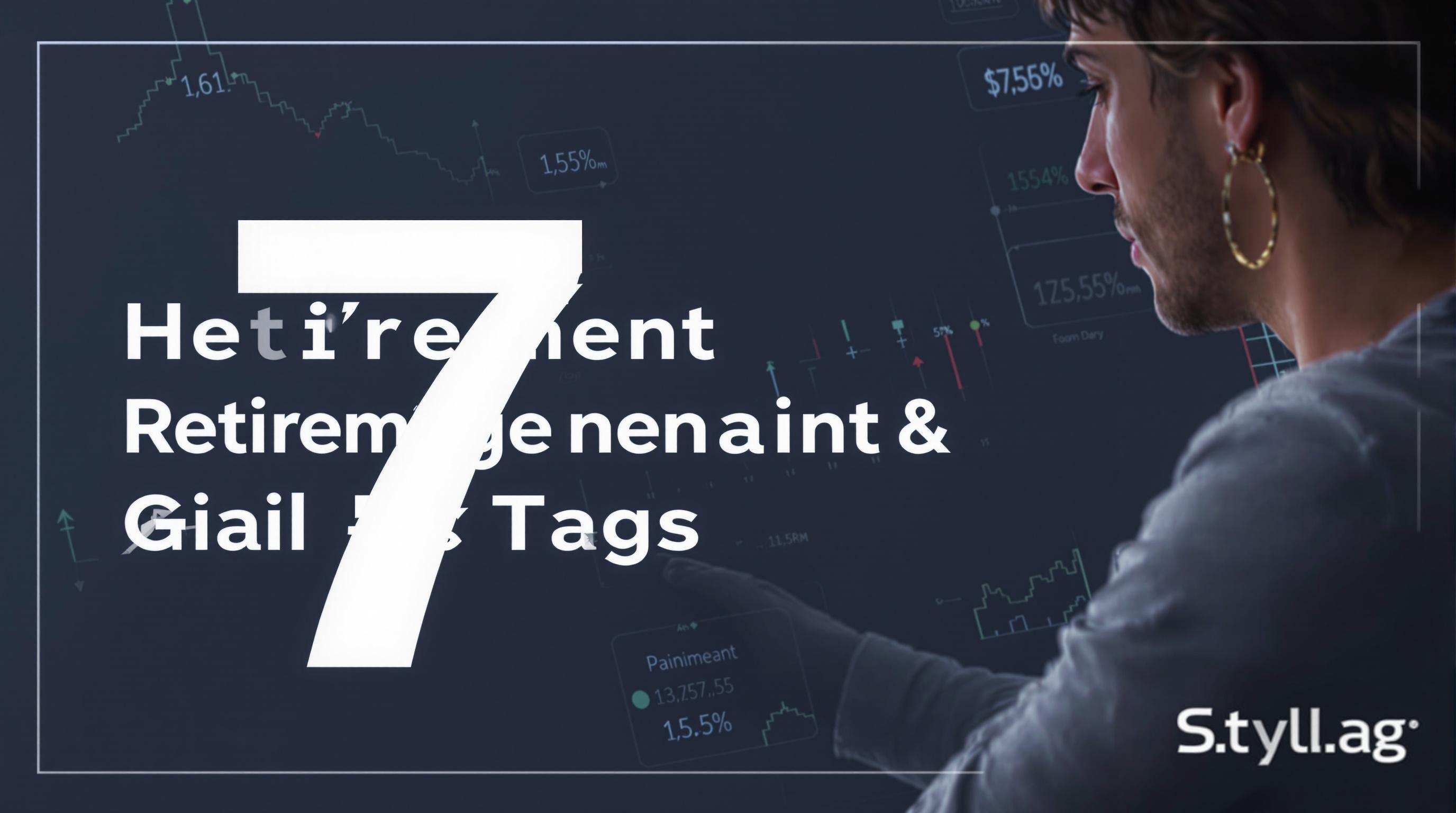Featured Articles
- Retirement Adventures: Exploring the Growing Trend of 'Retirement Sabbaticals' for a Fulfilling Future
- "Retirement in the Metaverse: How Virtual Real Estate Might Shape Your Golden Years"
- "Retirement on Wheels: Exploring the Vanlife Movement as a New Approach to Aging Gracefully"
- Retirement Planning for the Unplugged: Embracing Minimalism and Digital Detox Before You Retire
- "Retirement Reimagined: Exploring the Rise of Eco-Friendly Living for Seniors in a Post-Pandemic World"
Top 7 Innovative Retirement Planning Tools Released in the Last 5 Years: A Comprehensive Comparison and Review
Top 7 Innovative Retirement Planning Tools Released in the Last 5 Years: A Comprehensive Comparison and Review
Top 7 Innovative Retirement Planning Tools Released in the Last 5 Years: A Comprehensive Comparison and Review
Retirement planning has witnessed a technological revolution over the last five years, with a wealth of innovative tools designed to simplify the complex task of securing financial stability in later life. As life expectancy rises and financial landscapes evolve, these tools provide users with personalized insights, dynamic planning options, and real-time adjustments. This article reviews seven of the most impactful retirement planning tools introduced recently, examining their features, usability, and overall value.
Understanding the capabilities and differences of these tools can empower individuals to make informed decisions tailored to their unique retirement goals. The following sections provide a detailed analysis of each tool, including pricing, user interface, integration with other financial platforms, and the accuracy of their forecasting models.
Our comparative review draws from user feedback, expert evaluations, and independent financial research conducted across multiple platforms over the past five years. References to studies and financial advisories help underpin the reliability and quality of the tools discussed.
1. NewRetire: Personalized AI-Driven Retirement Planner
NewRetire harnesses artificial intelligence to deliver highly personalized retirement plans. By analyzing income streams, spending habits, and investment portfolios, it forecasts retirement readiness with remarkable precision. Its AI engine continuously updates projections based on market fluctuations and user input.
One of NewRetire’s standout features is its scenario planning capability, which allows users to model various life events, such as early retirement or unexpected healthcare costs. This flexibility helps users develop robust strategies that can endure economic uncertainty. The interactive interface is praised for accessibility and clarity, making complex data easy to understand.
According to a 2023 report from FinTech Insights, NewRetire’s AI accuracy outperformed traditional models by 22% in predicting sustainable retirement income. While subscription-based, the tool offers tiered plans to cater to different user needs, making it a versatile option for both novices and experienced planners.
2. SparkFi: Socially Responsible Investment Retirement Tool
SparkFi integrates retirement planning with socially responsible investing (SRI), appealing to users prioritizing ethical financial decisions. The platform provides customized portfolios aligned with users’ values, such as environmental sustainability and social equity, without compromising on growth potential.
Through partnerships with leading ESG (Environmental, Social, and Governance) rating agencies, SparkFi regularly updates its investment universe to reflect the latest ethical standards. Its retirement calculator incorporates these values into projected outcomes, blending financial goals with social impact.
Industry analysts from Ethical Finance Review highlight SparkFi’s role in popularizing value-based retirement investing since its 2020 launch. Although still growing its user base, SparkFi receives high marks for its educational content and transparent fee structure, fostering informed consent among users.
3. SecurePath: Blockchain-Enabled Retirement Accounts
SecurePath introduces blockchain technology to enhance security, transparency, and efficiency in retirement account management. By leveraging distributed ledger systems, it minimizes fraud risks and accelerates transaction processing, which is particularly valuable in managing diverse portfolios.
The tool supports integration with multiple custodians and pension providers, enabling consolidated views of retirement assets secured behind blockchain encryption. Users can track contributions, withdrawals, and portfolio performance in real-time with immutable audit trails.
Research published in the Journal of Financial Technology (2022) shows SecurePath’s blockchain features significantly reduce processing errors and increase user confidence. However, limited mainstream adoption and the technical learning curve present challenges for widespread use at present.
4. RetireMate: Gamified Education and Planning Platform
RetireMate combines financial education with gamification to engage users actively in their retirement planning journey. It uses quizzes, challenges, and progress tracking to teach key concepts such as asset allocation, tax implications, and inflation adjustments.
Gamification increases motivation and retention of complex financial concepts, especially among younger audiences who may under-appreciate the urgency of early planning. The app offers personalized feedback and recommendations based on user performance, encouraging continual improvement.
A 2021 study by the Behavioral Finance Institute found that RetireMate users demonstrated a 35% increase in retirement savings contributions within six months of engagement. While not a direct planning tool, its educational value strongly supports informed decision-making.
5. ClearNest: Collaborative Family Retirement Planner
ClearNest facilitates collaborative retirement planning with family members, a feature gaining importance as multigenerational financial planning grows. It offers shared dashboards, messaging systems, and goal tracking that integrate inputs from spouses, children, and advisors.
This collaborative approach helps address gaps in communication about retirement goals, healthcare needs, and inheritance planning. ClearNest also provides privacy controls, enabling users to decide which information is shared and with whom.
Financial planners advocating for holistic retirement strategies frequently recommend ClearNest for its ability to align family expectations. Reports from the National Association of Personal Financial Advisors (NAPFA) note increased satisfaction and reduced conflict among users employing collaborative tools like ClearNest.
6. FutureFund: Dynamic Withdrawal Strategy Simulator
FutureFund empowers retirees to simulate various withdrawal strategies, emphasizing sustainability of income throughout retirement. It models tax implications, market volatility, and changing spending patterns to recommend optimal withdrawal rates.
The tool incorporates recent research on "safe withdrawal rates" and adapts dynamically as users enter different life phases or encounter financial shocks. Its visually intuitive charts and alerts support proactive management of retirement income.
According to a 2024 article in the Journal of Retirement Planning, FutureFund’s simulations significantly reduce the risk of outliving savings. Available mainly to financial advisors, FutureFund is gaining traction as a professional-grade planning resource.
7. MedRetire: Integrated Healthcare Cost Estimator
MedRetire addresses one of the most critical and unpredictable expenses in retirement: healthcare. The tool integrates user health data, insurance plans, and regional cost variations to project personalized healthcare expenses over the retirement horizon.
It helps users anticipate needs for long-term care, prescription medications, and emergency services while suggesting insurance products and savings strategies to mitigate risk. MedRetire also updates projections based on policy changes and medical inflation trends.
Healthcare economists cite MedRetire as a key advancement in aligning retirement funds with realistic medical cost expectations. The tool is particularly useful given that healthcare costs consume an estimated 30% of typical retirement budgets in the U.S. (Kaiser Family Foundation, 2023).
Comparative Insights and User Considerations
Each of these seven tools brings unique strengths to retirement planning, catering to different user priorities: from AI-driven forecasting in NewRetire to value integration in SparkFi and security innovation via SecurePath. Selecting an appropriate tool depends largely on factors such as user tech-savviness, desired level of involvement, and specific planning goals.
For individuals seeking comprehensive, automated forecasting, NewRetire and FutureFund stand out as leaders. Meanwhile, those concerned with ethical investing or family collaboration may find SparkFi and ClearNest more aligned with their values and lifestyles. Educational tools like RetireMate serve a complementary role, especially for younger users.
Cost, platform accessibility, and integration with existing financial systems should also guide tool selection. Many platforms offer free trials or tiered subscriptions, enabling users to test functionalities before committing financially. Overall, the combined use of multiple tools can yield more robust and adaptable retirement strategies.
Future Directions in Retirement Planning Technology
Looking ahead, retirement planning tools are expected to further blend emerging technologies such as machine learning, blockchain, and big data analytics to refine personalization and security. Real-time data integration from various life domains—including healthcare, employment, and social security systems—will enhance model accuracy.
Moreover, greater emphasis on mental and physical well-being alongside financial metrics is anticipated, promoting holistic retirement readiness. The rise of decentralized finance (DeFi) and digital currencies could introduce new asset classes into retirement portfolios accessible via innovative planning platforms.
As user demands evolve, developers will likely focus on increasing interoperability between tools, improving user interfaces, and widening accessibility through mobile and voice-activated technologies. Enhanced regulatory clarity will also play a role in shaping trust and adoption rates for these tools.
Conclusion
The past five years have witnessed transformative advances in retirement planning through innovative tools that enhance personalization, security, engagement, and social responsibility. These top seven tools reviewed here represent diverse approaches tailored to meet modern retirees’ varied and complex needs.
Whether leveraging artificial intelligence, blockchain, or gamification, the evolving landscape of retirement planning solutions empowers individuals to build resilient financial futures with greater confidence. By carefully evaluating the features and fit of each tool, users can navigate the path to retirement more strategically.
Ongoing technological advancements and increased consumer awareness promise continued improvements in retirement planning efficacy and user experience. Staying informed and proactive will remain key as retirees embrace these cutting-edge resources for lifelong financial wellbeing.




